Boeing's Starliner OFT-2 spacecraft test flight for NASA in amazing photos
See photos of Boeing's Orbital Flight Test 2 mission, the second uncrewed test flight of its Starliner astronaut taxi.
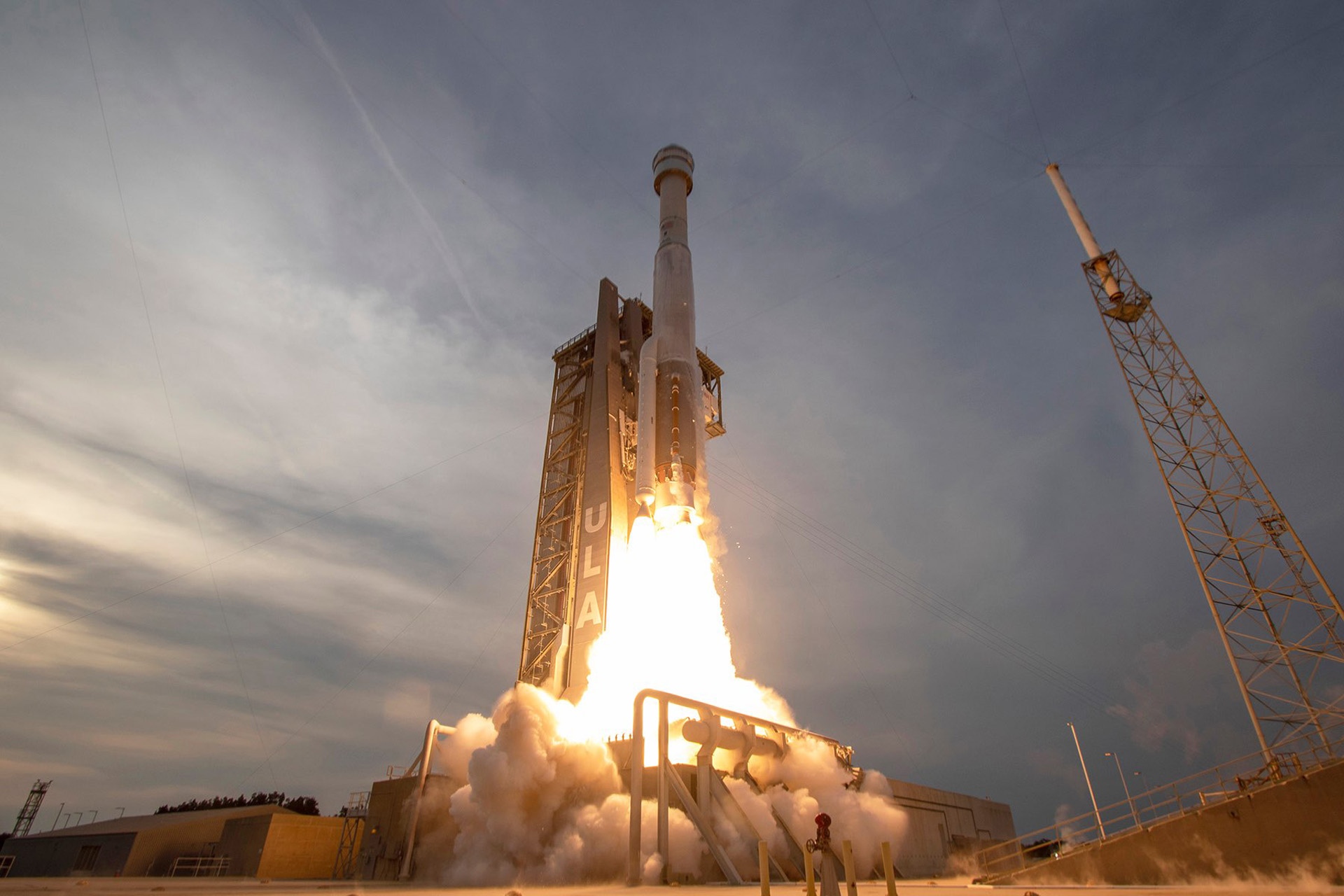
On May 19, 2022, Boeing successfully launched a Starliner spacecraft on the company's second uncrewed test flight to the International Space Station for NASA.
The Orbital Flight Test 2 (OFT-2 mission) will spend about a week at the International Space Station before returning to Earth with a parachute-assisted landing at White Sands Space Harbor in New Mexico. The May 2022 launch came after an August 2021 attempt was stalled due to stuck valves on the spacecraft. Boeing is flying the OFT-2 mission because its first uncrewed test flight OFT-1 failed to reach the space station in December 2019.
If all goes well, the OFT-2 Starliner will arrive at the space station on May 20 and spend five days at the outpost before returning to Earth.
See photos of the Starliner OFT-2 mission here! The photo above shows Starliner launching atop its Atlas V rocket as seen by a United Launch Alliance camera at the Space Launch Complex 41 pad at Cape Canaveral Space Force Station.
Live updates: Follow Boeing's Starliner OFT-2 mission here
Related: Everything you need to know about Boeing's Starliner OFT-2 mission
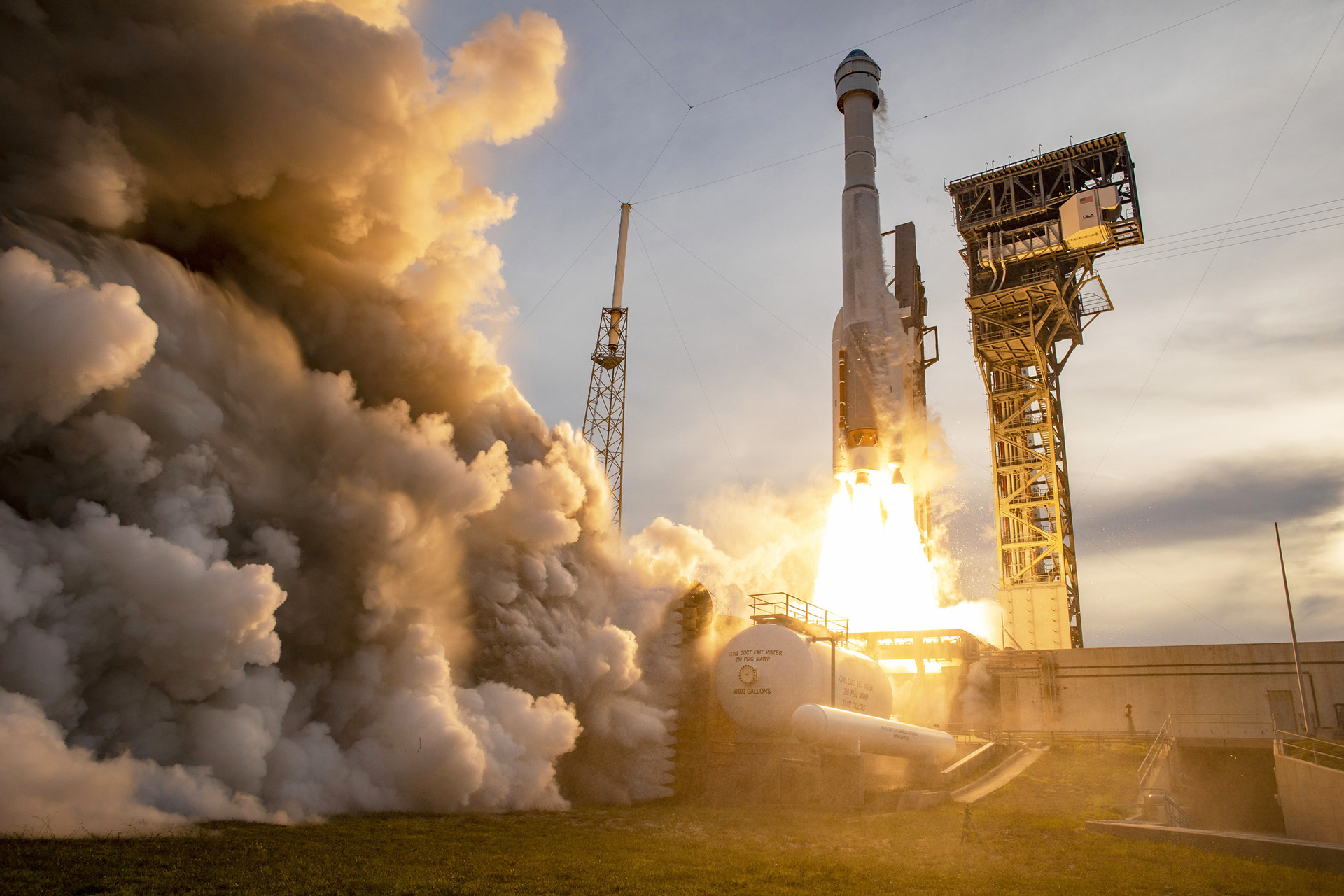
This spectacular view of the Starliner launch on May 19, 2022 comes from the United Launch Alliance, which uses Space Launch Complex 41 at Cape Canaveral Space Force Station for Atlas V launches.
This view shoes a clear look at how the pad has been modified for Starliner crewed flights. The blocky tower to the right of the Atlas V rocket is a service structure that contains a Crew Access Arm, which astronauts will use to enter the Starliner capsule during launches.
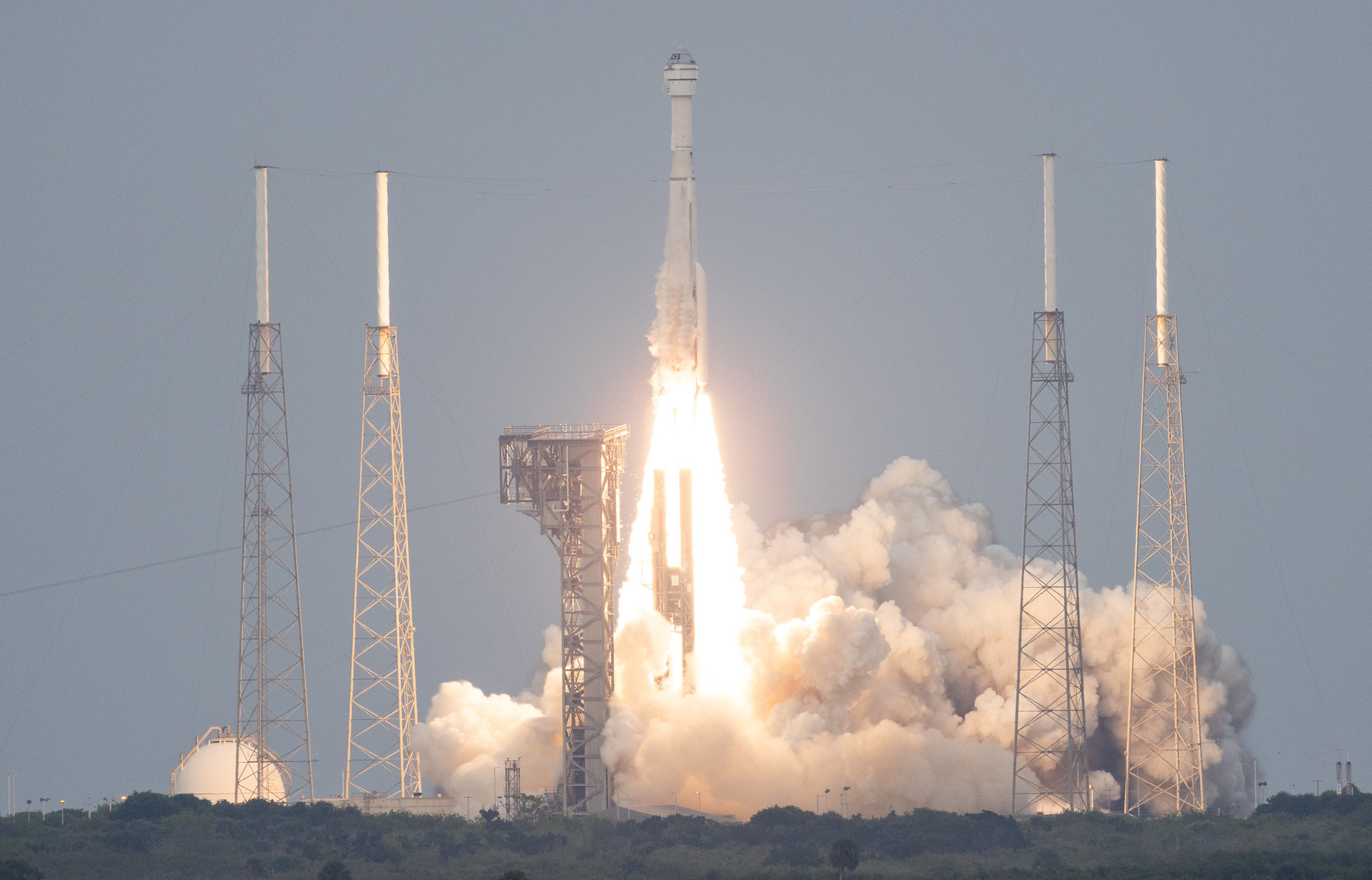
This NASA photo of Boeing's Starliner launch shows a wider view of the capsule's Atlas V rocket as it soars toward space.
This view was captured by NASA photographer Joel Kowsky and shows a vast, billowing cloud of exhaust blooming around the rocket's launch pad as it soars to space.
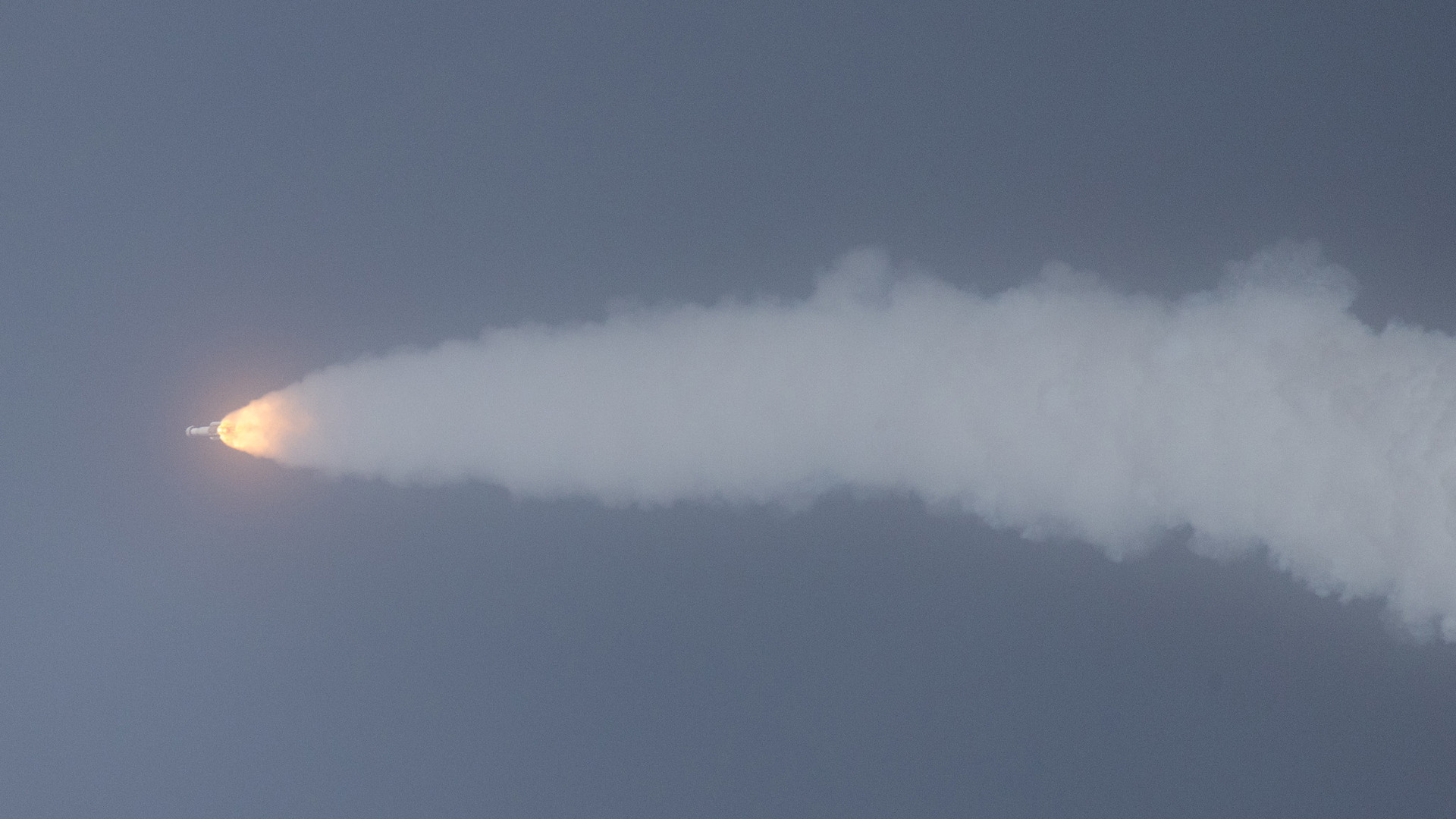
It took Boeing's Starliner OFT-2 capsule about 31 minutes to reach its final orbit. The Atlas V rocket carried Starliner for the first 11 minutes using a first stage booster, strap on solid rocket booster and a Centaur upper stage.
About 14 minutes into the flight, the Starliner capsule separated from the Centaur stage and coasted for another 17 minutes. At the 31-minute mark, the spacecraft fired its thrusters in order to enter orbit.
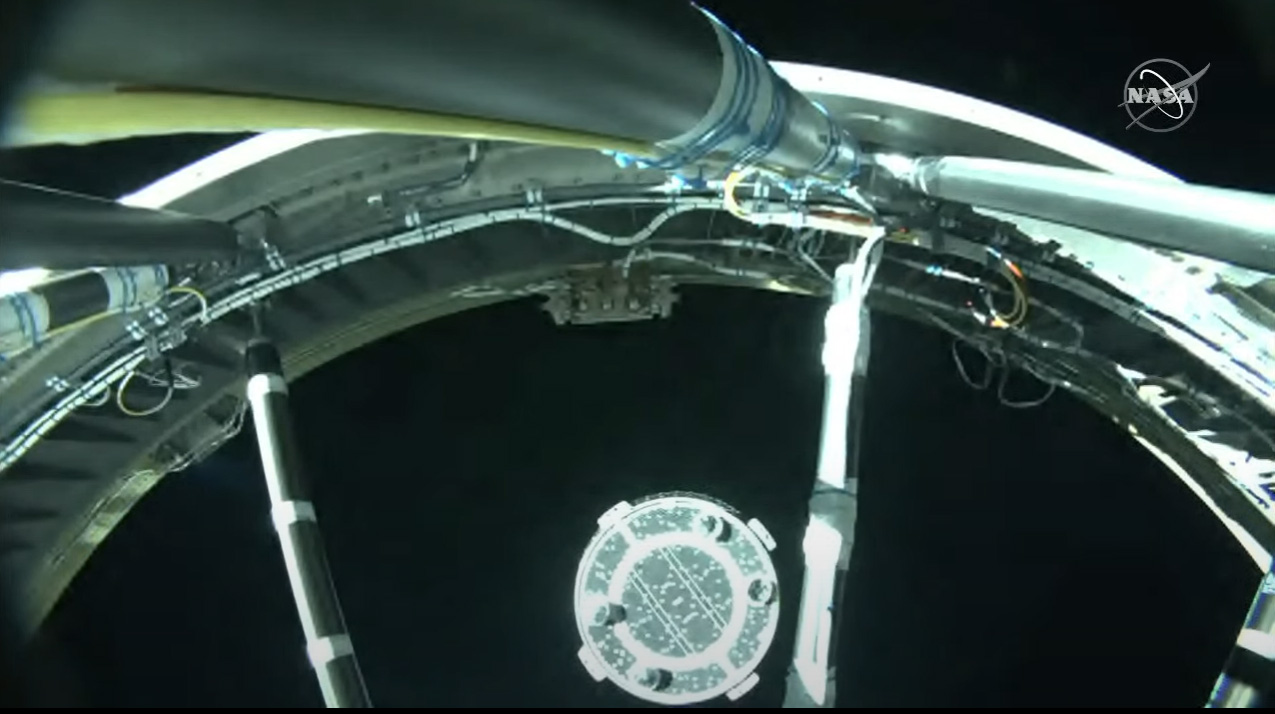
This is the last view of Boeing's Starliner OFT-2 spacecraft until its docking at the International Space Station.
A camera on the Centaur upper stage of Starliner's Atlas V rocket captured this still of Starliner as it separated about 14 minutes after liftoff.
Boeing said it is working on updates to the Starliner's camera systems so there are no live video views from inside or outside the OFT-2 vehicle itself on this mission.
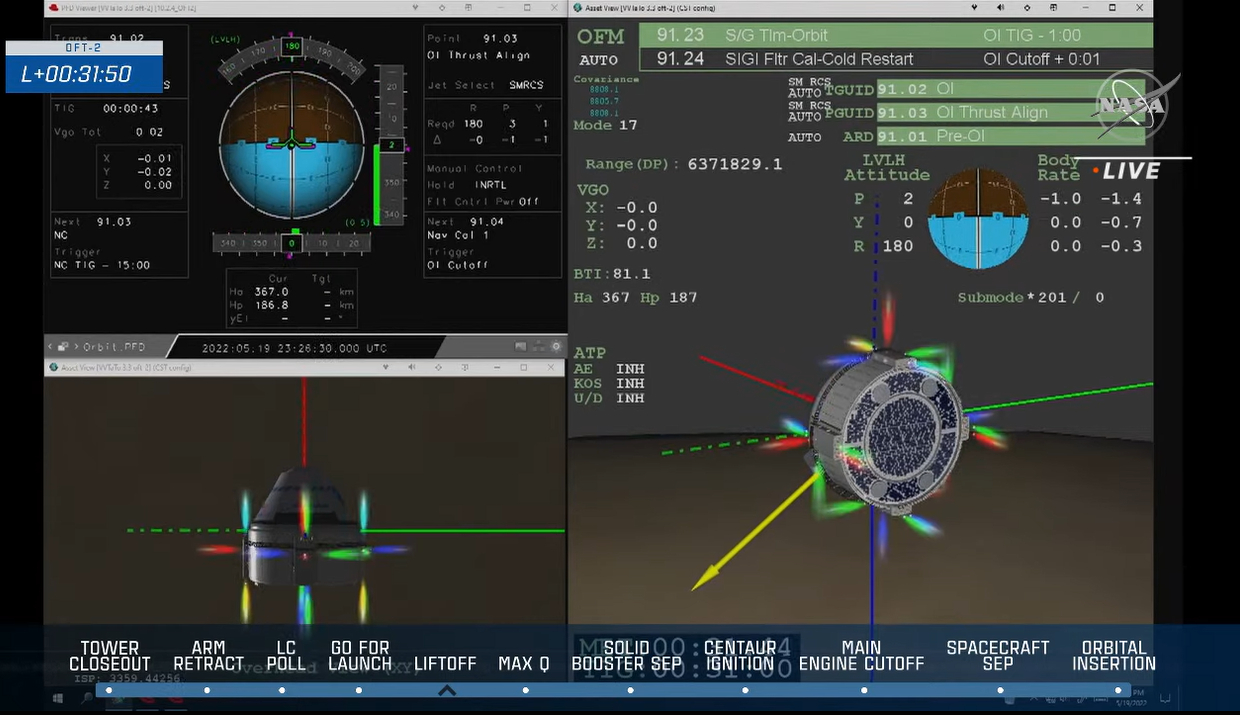
This Boeing graphic shows a critical moment in the Starliner OFT-2 mission when the spacecraft executed a so-called "orbital insertion burn" about 31 minutes after launch.
The maneuver was key for Starliner in order to reach its intended orbit. Software issues prevented the OFT-1 Starliner mission from reaching orbit during this phase of the flight, so the fact that OFT-2's burn went well was a major milestone.
During the maneuver, two of 10 thrusters on Starliner did fail and Boeing engineers aren't sure why, but they are investigating the issue. The eight other thrusters were able to compensate for the drop out and it is not expected to post an issue for docking and the rest of the mission.

Boeing's Starliner OFT-2 capsule did have a passenger of sorts on board as it soared into space.
Meet Rosie the Rocketeer! Named after the iconic Rosie the Riveter character from World War II, Rosie the Rocketeer is an anthropomorphic dummy designed to test the forces and G-loads an astronaut will feel during a launch to space aboard Starliner.
Boeing and NASA also backed about 500 pounds of supplies on the Starliner for the trip to the space station. The spacecraft will bring about 600 pounds of cargo back to Earth when it lands.
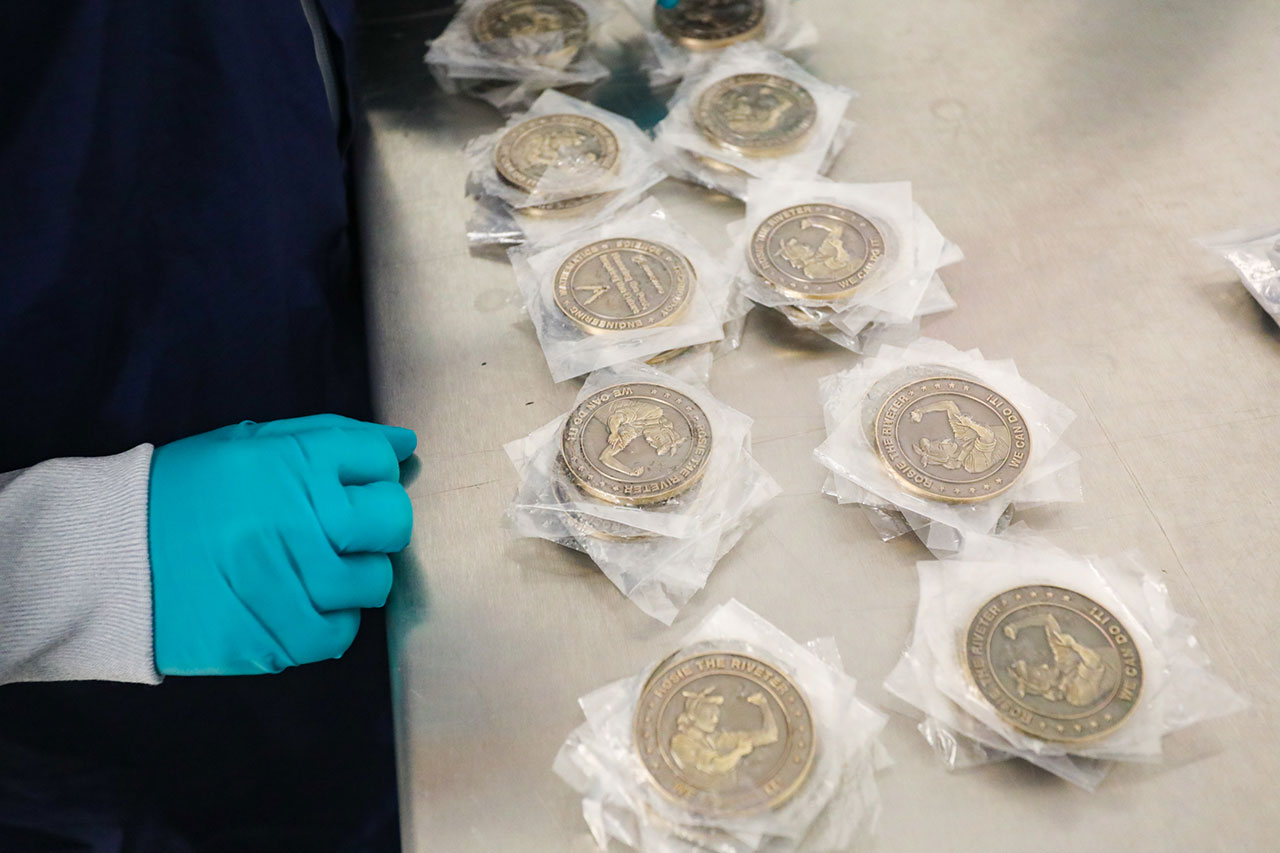
These Rosie the Riveter commemorative coins were expected to fly on the second orbital flight test of Boeing's Starliner.
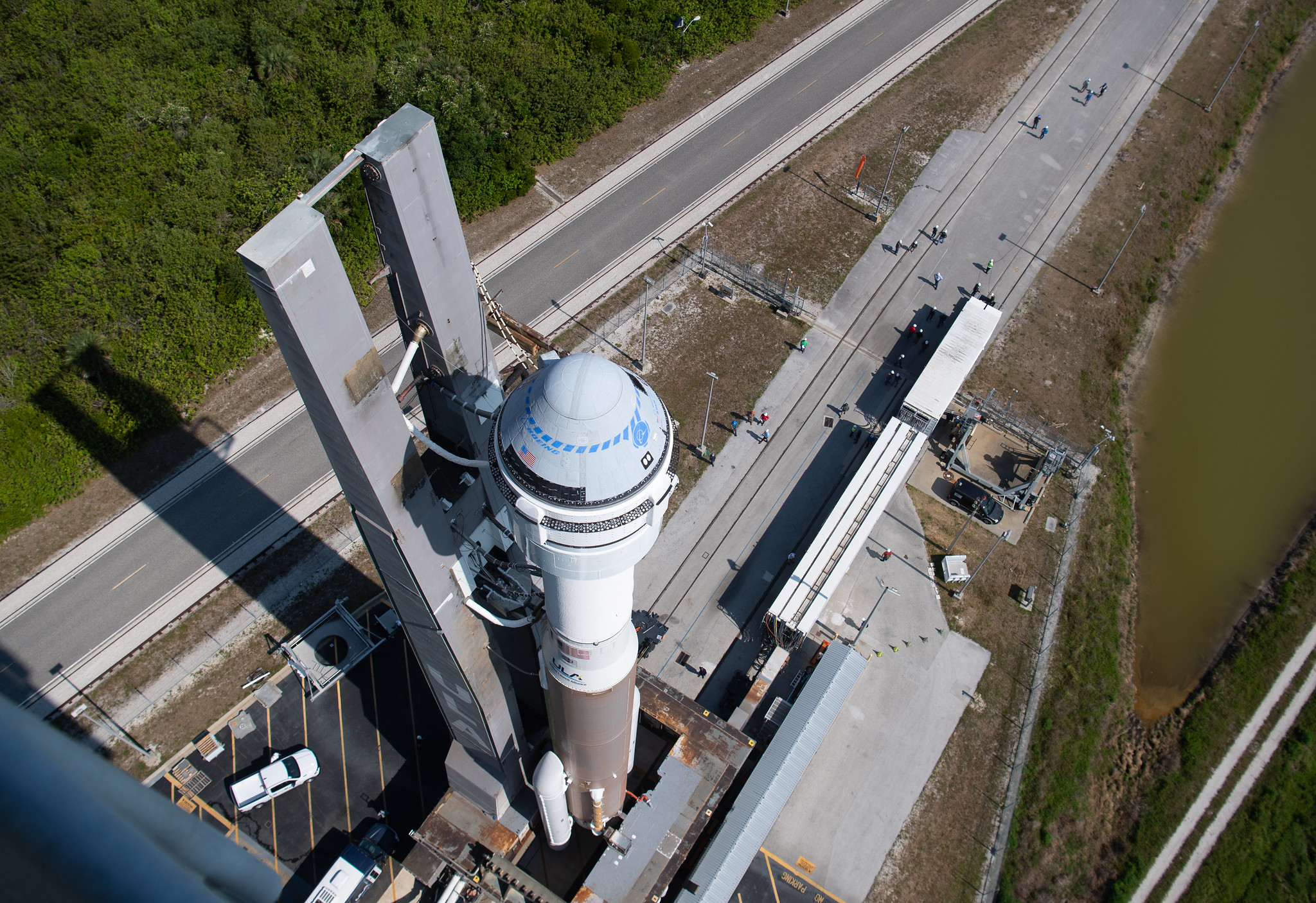
This look down at the Starliner space capsule atop its Atlas V rocket gives you a sense of the scale of the booster. If you look close, you'll see some United Launch Alliance engineers and workers far below on the transporter path to the pad.
ULA used an Atlas V rocket with two solid rocket boosters to launch the Starliner OFT-2 mission. The rocket stands 172 feet tall with a first stage powered by an RD-180 engine.
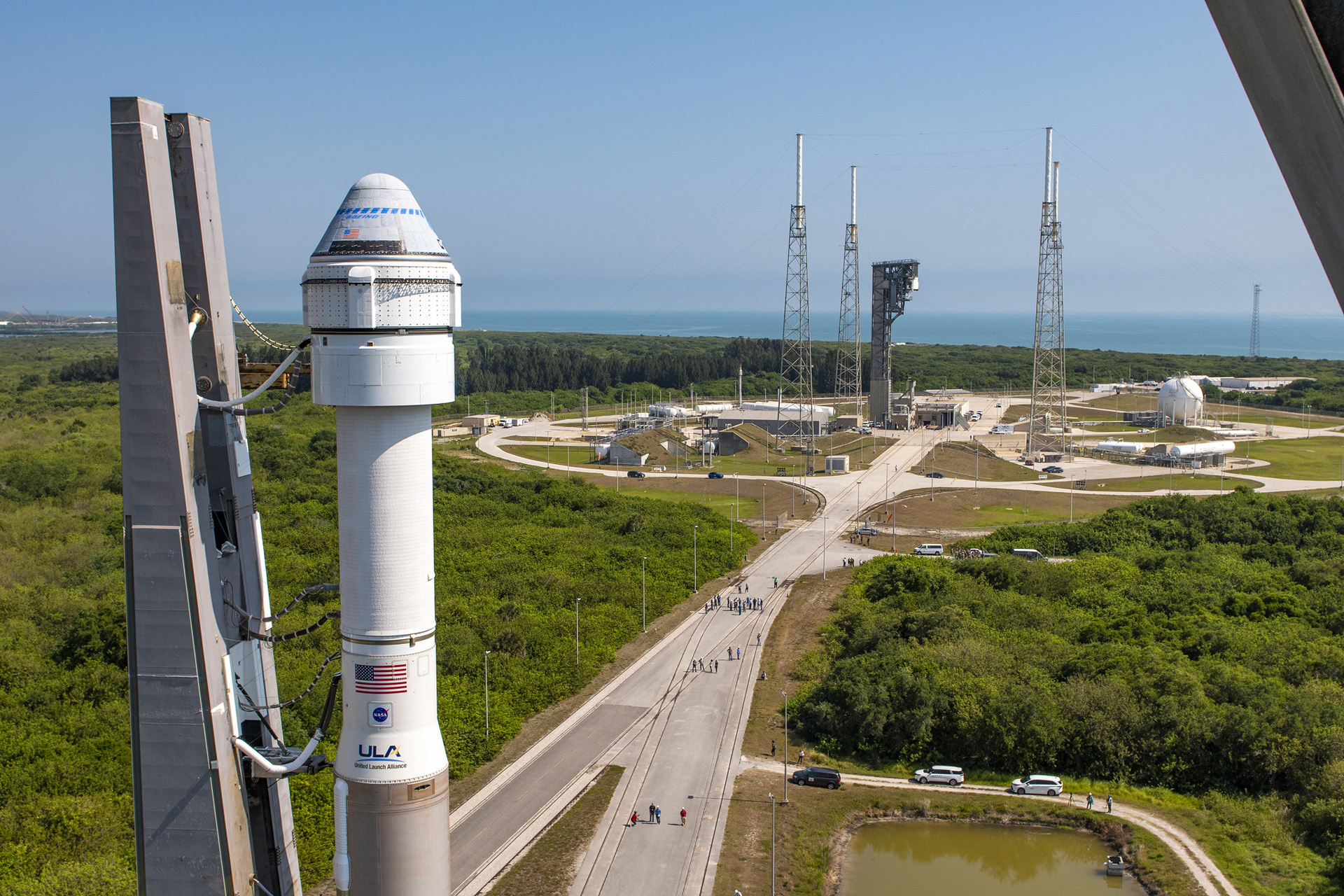
This United Launch Alliance photo shows the path from ULA's Vertical Integration Building to its launch pad at Launch Complex 41 of the Cape Canaveral Space Force Station in Florida.
ULA and Boeing became the second commercial team to launch a private spacecraft intended to carry astronauts to the International Space Station (and reach its intended orbit) with the May 19 OFT-2 launch.
The first company to launch a crew vehicle to the station was SpaceX, which began flying crewed flights to the station in May 2020.
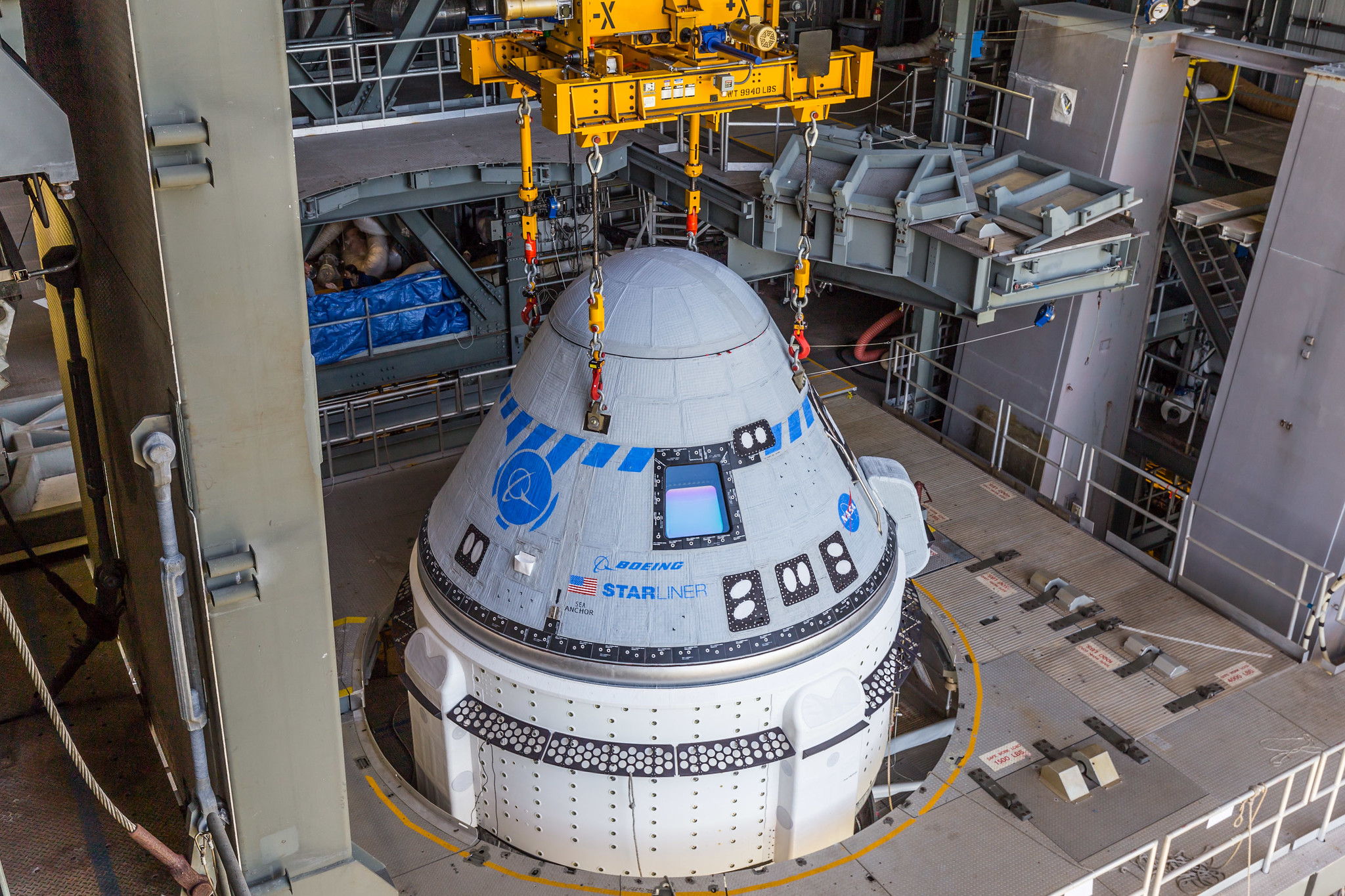
This image shows a clear view of the Boeing Starliner space capsule atop its Atlas V rocket after stacking.
Boeing's Starliner is about 16.5 feet tall including its service module and is about 15 feet wide. It is designed to carry up to four astronauts to orbit, remained docked at the station and then return to Earth for land-based landings in the western United States.
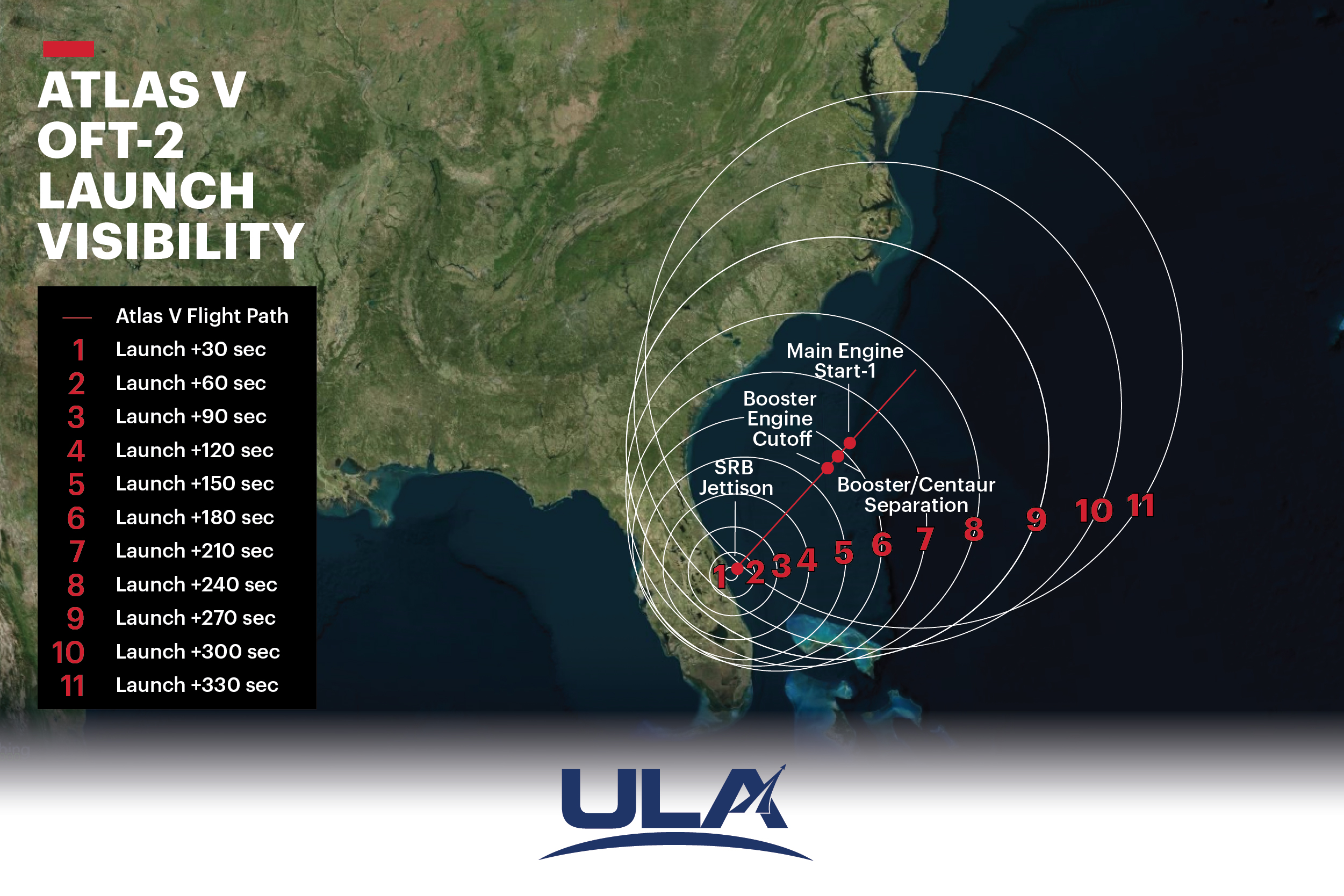
The launch of Boeing's Starliner Orbital Flight Test 2 (OFT-2) mission may be visible to spectators along the eastern seaboard of the United States, weather and daylight permitting. This visibility map shows where the rocket will be visible for about five minutes after liftoff.
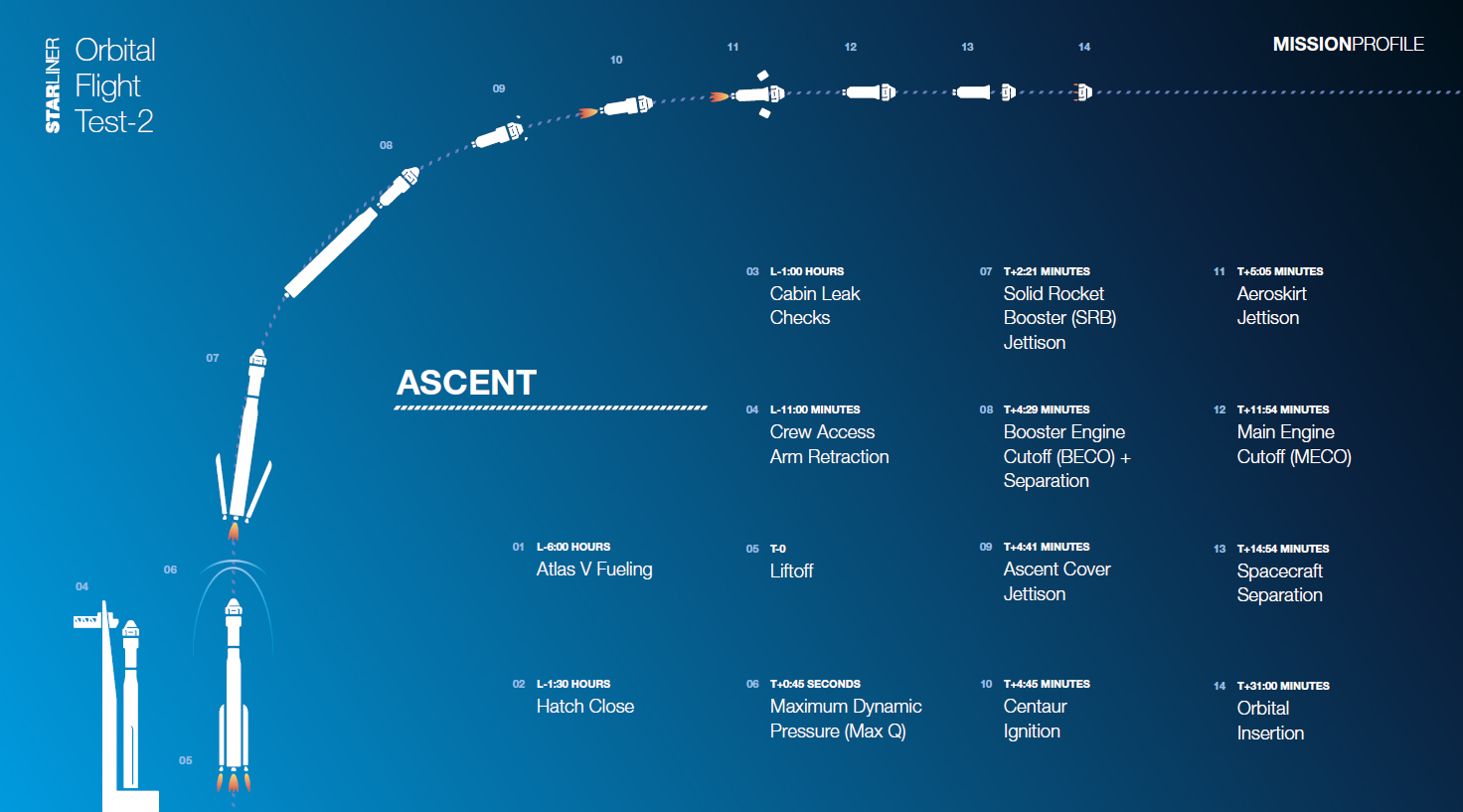
This graphic details ascent operations for NASA’s Boeing Orbital Flight Test-2 (OFT-2).
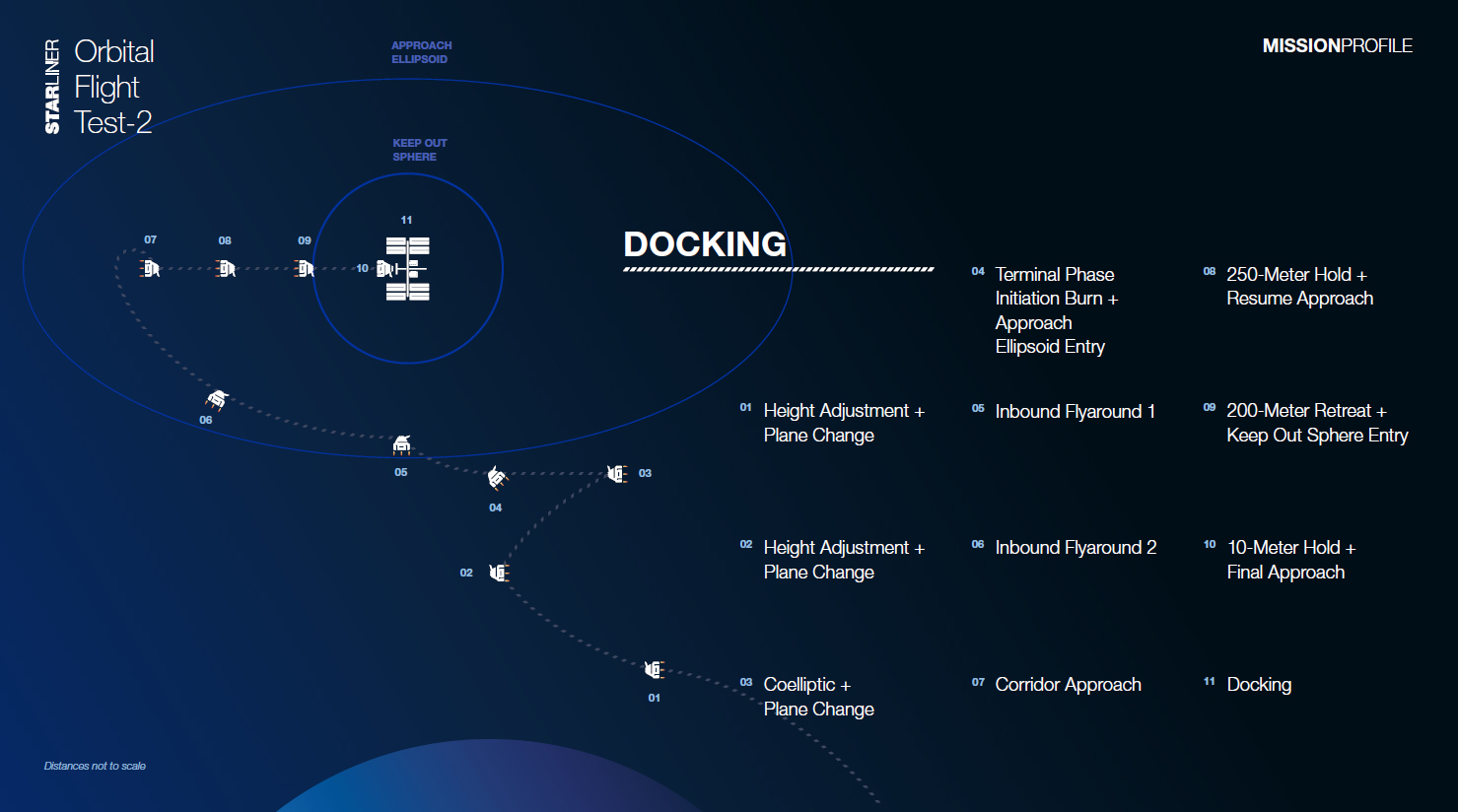
This graphic details docking operations for NASA’s Boeing Orbital Flight Test 2 (OFT-2).
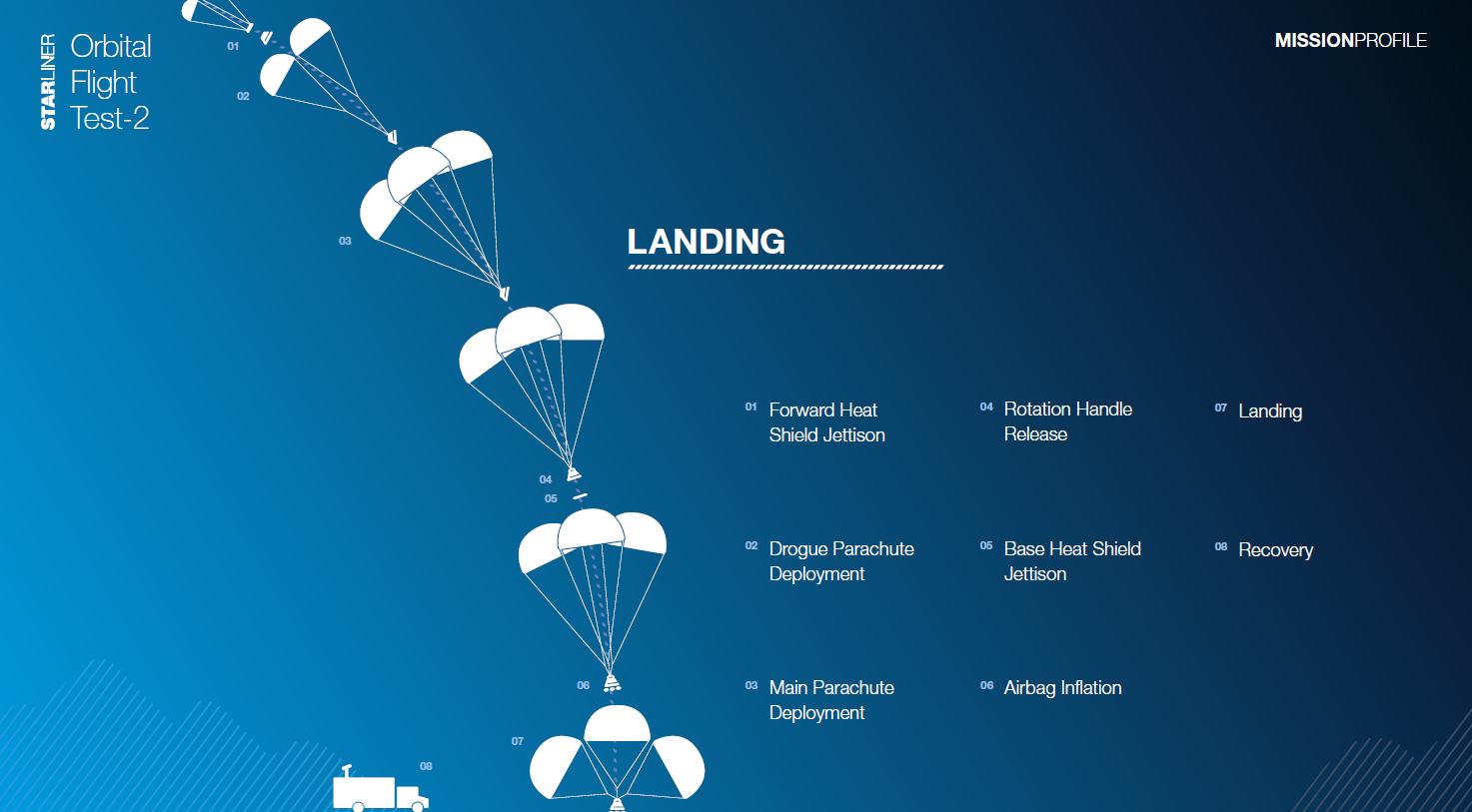
This graphic details landing operations for NASA’s Boeing Orbital Flight Test-2 (OFT-2).
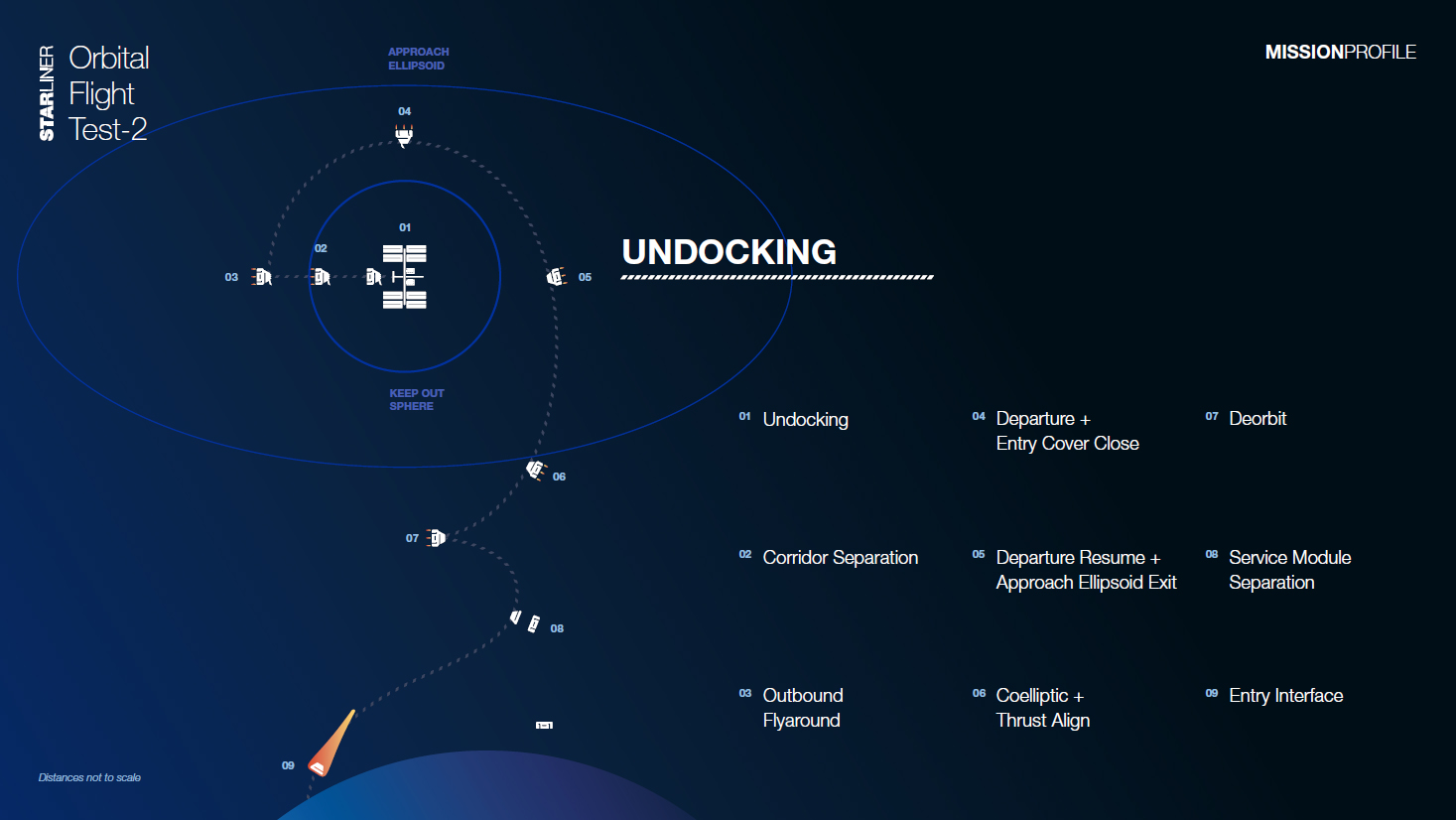
This graphic details undocking operations for NASA’s Boeing Orbital Flight Test-2 (OFT-2).

Boeing's Starliner flight test patches: Pad Abort Test, 2019; Orbital Flight Test (OFT), 2019; Orbital Flight Test 2 (OFT-2), May 2022; and Crewed Flight Test (CFT), launch time to be determined.
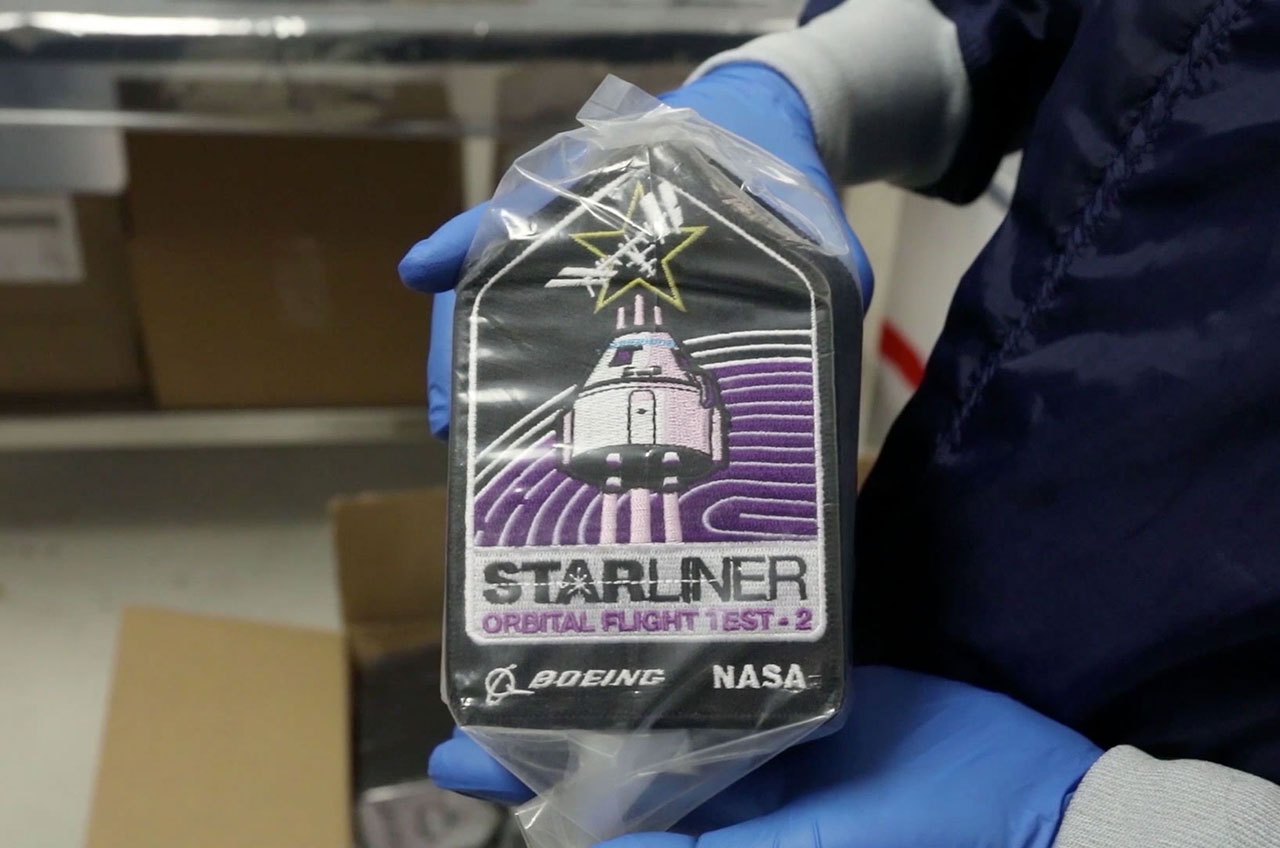
A Boeing technician holds a package of CST-100 Starliner Orbital Flight Test 2 patches to be flown on board the mission.
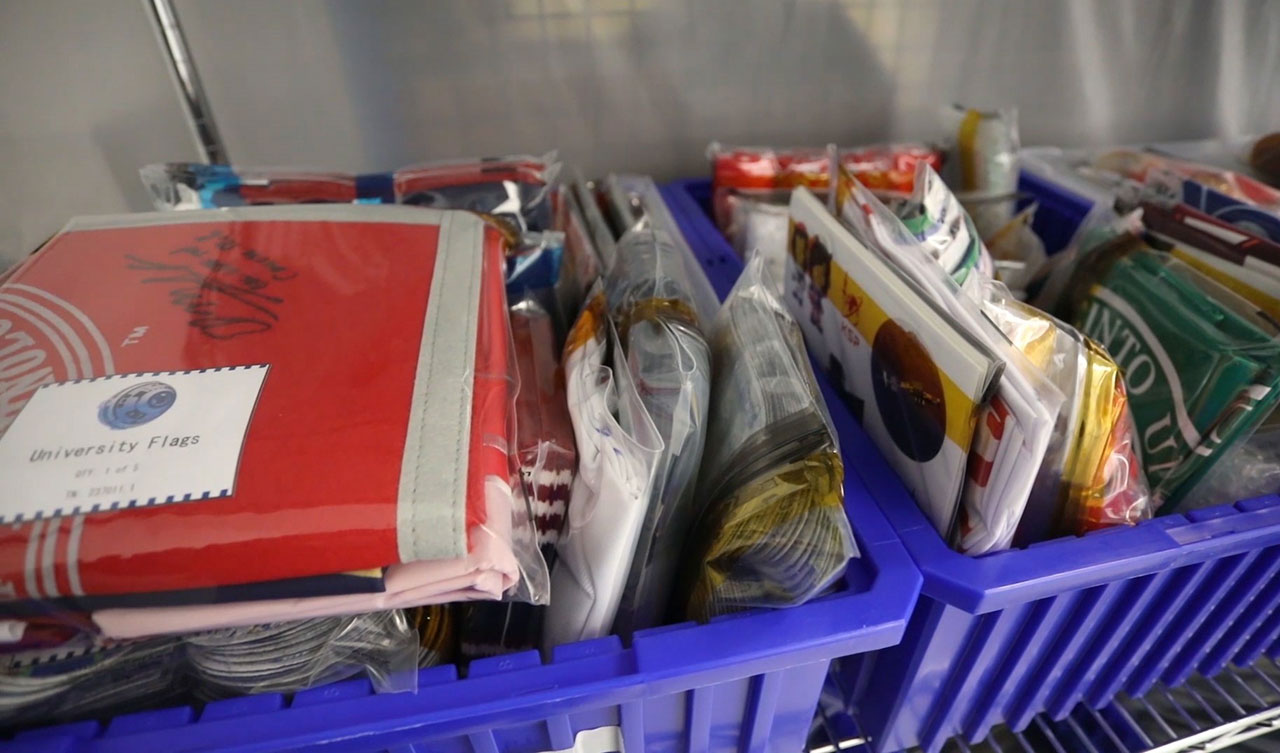
Flags and banners for historically black colleges and universities (HBCUs) await being packed for the second orbital flight test of Boeing's CST-100 Starliner spacecraft.
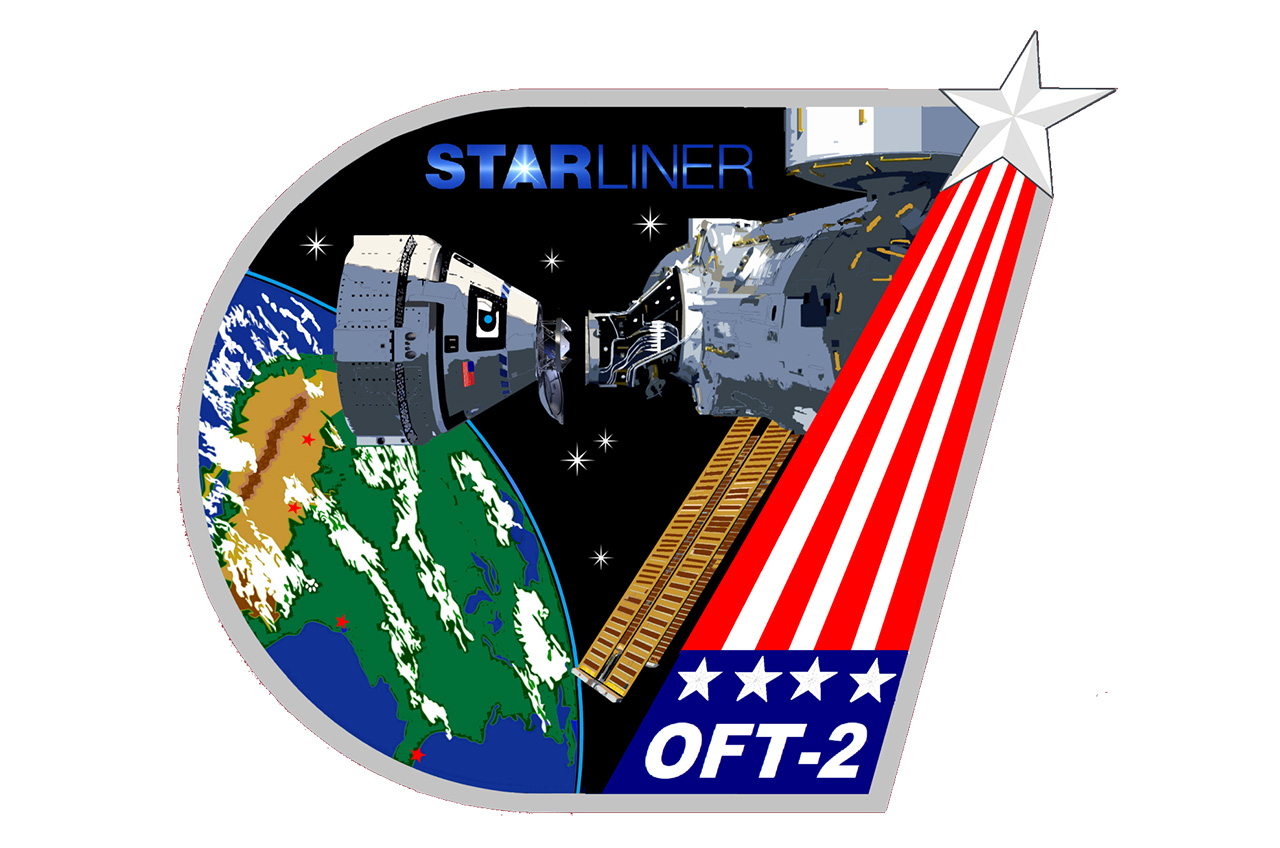
Boeing's Orbital Flight Test 2 Mission Operations patch represents the NASA flight controllers who will oversee the mission.
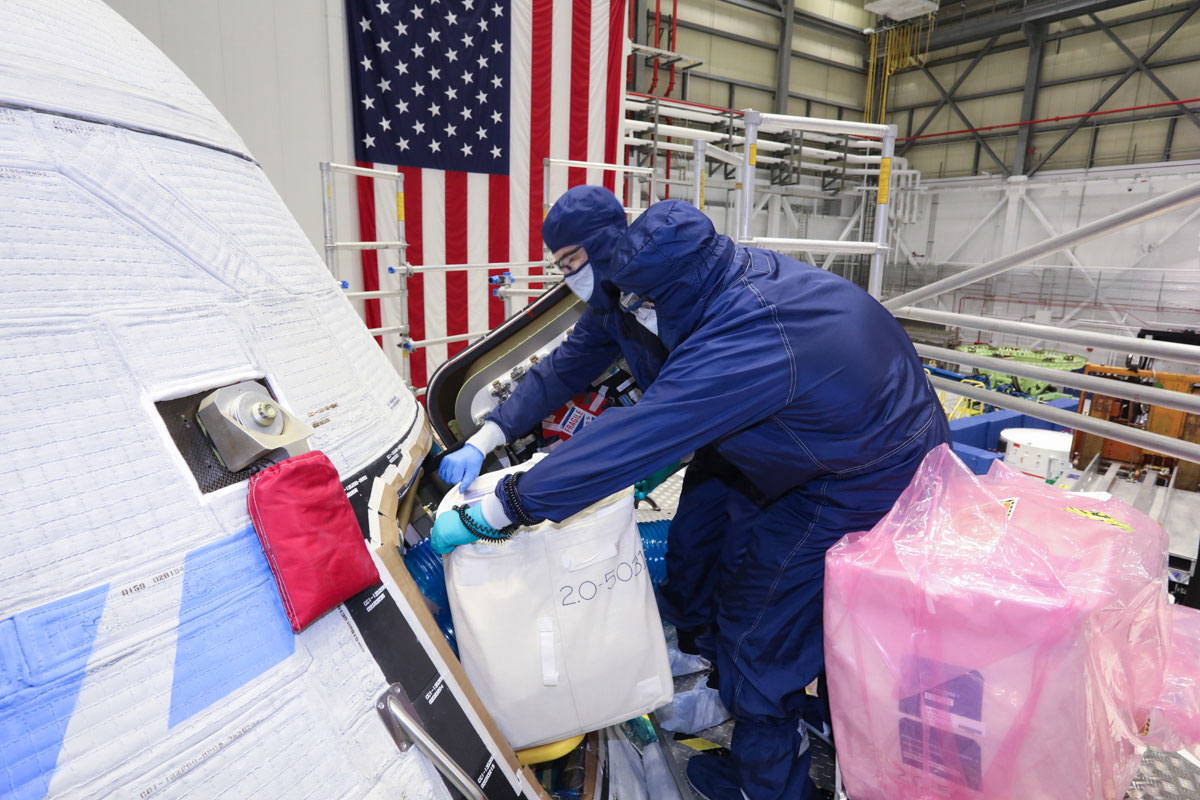
Boeing technicians load a package of mementos aboard the Orbital Flight Test 2 Starliner capsule in preparation for its launch.
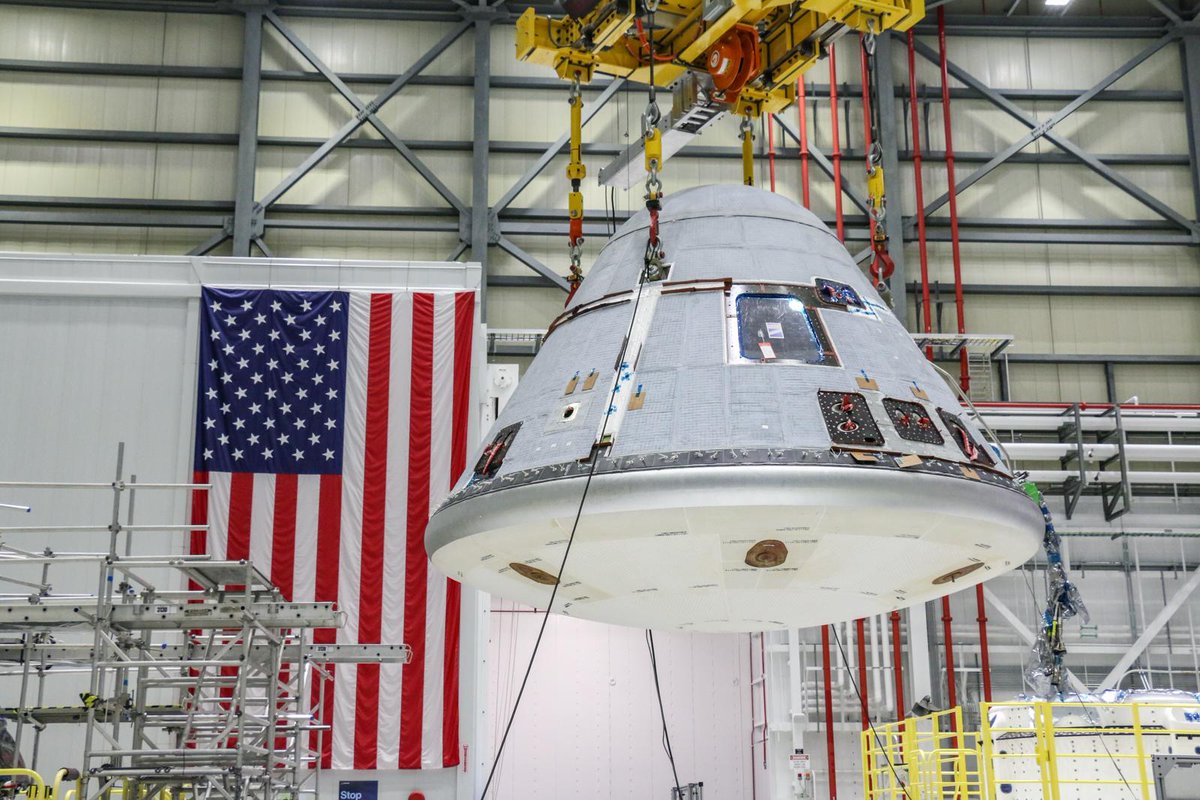
The fully assembled Starliner spacecraft being prepared to fly Boeing's Orbital Flight Test-2 is lifted inside the Starliner production factory at Kennedy Space Center in Florida, on Jan. 13, 2021.

Space.com is the premier source of space exploration, innovation and astronomy news, chronicling (and celebrating) humanity's ongoing expansion across the final frontier. Originally founded in 1999, Space.com is, and always has been, the passion of writers and editors who are space fans and also trained journalists. Our current news team consists of Editor-in-Chief Tariq Malik; Editor Hanneke Weitering, Senior Space Writer Mike Wall; Senior Writer Meghan Bartels; Senior Writer Chelsea Gohd, Senior Writer Tereza Pultarova and Staff Writer Alexander Cox, focusing on e-commerce. Senior Producer Steve Spaleta oversees our space videos, with Diana Whitcroft as our Social Media Editor.









